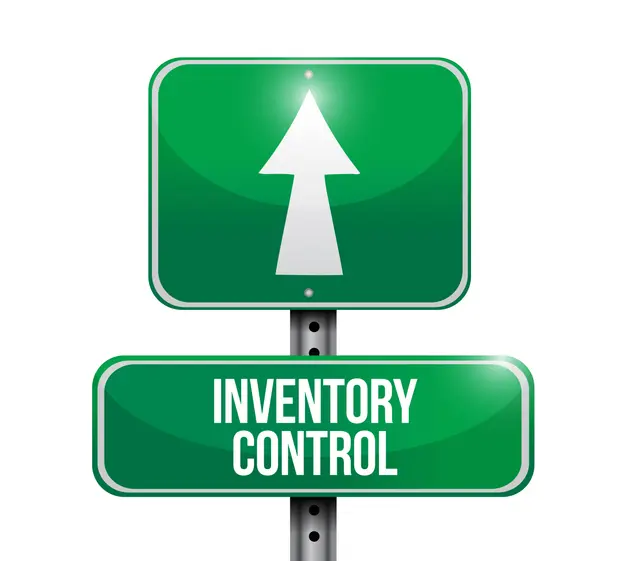Your inventory management system reports 50 units of your best-selling product are on the shelf, ready to ship. Yet, when the warehouse team goes to pick an order, they find only 45. Elsewhere, the system shows you’re out of stock on a critical component, forcing a halt in production, only for someone to later find a forgotten pallet of them in the wrong aisle. This disconnect between what your records say you have and what you actually possess is a silent profit killer. Inventory reconciliation is the critical business process designed to close this gap, ensuring your data reflects reality and your operations run on facts, not guesswork.
What is Inventory Reconciliation?
Inventory reconciliation is the process of comparing the physical stock you have on hand with the inventory records listed in your accounting or inventory management system. Its core purpose is to systematically identify, investigate, and correct any discrepancies between these two sets of data. The ultimate goal is to ensure that the book inventory (what the system says you have) perfectly matches the physical inventory (what is actually sitting on the shelves). Achieving this alignment is fundamental for accurate financial reporting, reliable operational planning, and maintaining the trust of your customers.
Why Accurate Inventory Reconciliation is Crucial
Performing regular inventory reconciliation is not just an administrative task; it’s a strategic activity with tangible benefits that ripple across the entire organization. It directly leads to improved financial accuracy, ensuring the value of inventory listed as an asset on the balance sheet is correct and that the Cost of Goods Sold (COGS) on the income statement is accurate. This financial integrity is vital for investors, lenders, and internal decision-making.
Operationally, it enhances customer satisfaction. By preventing stockouts and over-selling, you fulfill customer orders reliably, building trust and loyalty. It also helps optimize the supply chain. With a precise understanding of your stock levels, you can improve demand forecasting, set more effective safety stock levels, and make smarter purchasing decisions, avoiding both costly overstock and sales-killing shortages. Finally, reconciliation is a powerful tool for reducing risk. It quickly brings inconsistencies to light, helping you detect and address issues like shrinkage, theft, damage, and fraud before they become significant financial losses.
Common Causes of Inventory Discrepancies
Discrepancies between your physical stock and your records are common, but understanding their origin is the first step toward preventing them. These errors typically fall into a few key categories, ranging from simple human mistakes to complex systemic issues.
Human and Process Errors
The most frequent source of inventory discrepancies is simple human error. This can manifest as miscounts during physical checks, incorrect data entry when receiving goods or processing sales, or items being misplaced in the wrong bin or aisle within the warehouse. Even small errors during receiving or shipping processes, such as packing the wrong item for an order or failing to record a return properly, can create a ripple effect that throws off your entire inventory count.
Shrinkage: Theft, Damage, and Loss
Shrinkage refers to the loss of inventory for reasons other than legitimate sales. This broad category includes internal or external theft, where products are stolen by employees or shoplifters. It also covers damage, where items become unsellable due to mishandling or accidents, and simple loss or spoilage, where products are misplaced or expire before they can be sold. Inventory reconciliation is one of the most effective methods for detecting the patterns of shrinkage and quantifying its financial impact.
Supplier and Receiving Issues
Not all discrepancies originate within your four walls. Problems can begin with your suppliers. These issues include incorrect quantities being shipped (known as short-shipping or over-shipping), receiving the wrong products entirely, or a failure by the receiving team to properly document incoming shipments and customer returns. When the goods that physically arrive don’t match the paperwork, your inventory records will be inaccurate from the very start.
System and Data Entry Errors
Technology is a powerful tool, but it’s not immune to errors. Discrepancies can arise from software glitches or problems with unit of measure conversions, for instance, when the system logs a case of 12 items as a single unit. Other common system-related issues include incorrect part numbers or SKUs being scanned during transactions and failures with backflushing in manufacturing, a process where component materials are not automatically deducted from inventory correctly after a production run is completed.
The Inventory Reconciliation Process: A 5-Step Guide
While the specific tools and scale may vary between businesses, a successful reconciliation is built on a foundational five-step process. This structured approach provides a practical and actionable walkthrough to ensure accuracy and consistency.
Step 1: Prepare and Gather All Inventory Records
The preparatory phase is crucial for a smooth count. This involves freezing all inventory movement for the specific area being counted to ensure you are working with a static, unchanging snapshot of the stock. Next, gather all relevant documentation. This includes the most current inventory records from your warehouse management system (WMS) or ERP, recent shipping and receiving logs, and any records of items that have been damaged, scrapped, or returned since the last count.
Step 2: Conduct a Thorough Physical Count
This is the process of physically counting every item in the designated section of your warehouse or store. To ensure accuracy, it is best practice to work in teams, where one person counts and another records the data. Using count sheets or handheld scanners can dramatically reduce errors. It is also important to mark areas that have been completed to avoid the dual pitfalls of double-counting items or missing entire sections.
Step 3: Compare Physical Counts with System Records
Once the physical count is complete, the data must be compared line-by-line against the inventory records from your system. This critical stage is where discrepancies are officially identified. The primary goal is to generate a comprehensive variance report. This report should detail every item with a mismatch, noting the SKU, the expected quantity (from the system), the counted quantity (from the physical check), and the difference between the two.
Step 4: Investigate and Identify Root Causes of Discrepancies
This step requires you to act as a detective. For each discrepancy on the variance report, a thorough investigation must be conducted to uncover its origin. This process often includes recounting the specific item to rule out a simple counting error, checking recent transaction paperwork (like sales orders and purchase orders), looking for misplaced stock in nearby locations, and reviewing scrap or damage logs to see if the loss was recorded improperly.
Step 5: Adjust Records and Implement Corrective Actions
The final step involves two key actions. First, the book inventory must be adjusted in the system to reflect the physical reality discovered during the count. This ensures your records are accurate moving forward. More importantly, however, is the need to implement corrective actions based on the root causes found in Step 4. If data entry errors are common, for example, additional staff training is required. If receiving issues are the culprit, your receiving processes must be reviewed and improved. This focus on fixing the source of the problem is what makes reconciliation a truly valuable, long-term improvement tool.
Key Methods of Inventory Reconciliation
Businesses can choose from several methods for reconciliation, depending on their size, inventory complexity, and available resources. The most common approaches range from traditional annual counts to continuous, technology-driven systems.
Periodic Inventory Counts
The most traditional method is the full, wall-to-wall physical inventory count. A Periodic Inventory count is performed at set intervals, such as annually, semi-annually, or quarterly. During this time, operations are often paused to allow teams to count every single item in the facility. While this approach is disruptive, it provides a complete and accurate snapshot of all inventory at a specific point in time.
Cycle Counting
Cycle counting is a more modern and less disruptive method where small, targeted subsets of inventory are counted on a continuous, rotating schedule. This allows businesses to reconcile their inventory regularly without having to shut down operations. The ABC method is a popular technique used to prioritize cycle counts, where high-value (A) items are counted most frequently, moderate-value (B) items less often, and low-value (C) items least frequently.
Continuous Reconciliation (Perpetual Inventory)
This is an advanced method often enabled by technology like RFID and integrated inventory systems. In a perpetual system, inventory levels are tracked and updated in real-time as items are received, moved, sold, or used in production. Reconciliation happens continuously and often automatically, with manual spot-checks performed periodically simply to verify the system’s ongoing accuracy.
Best Practices for Effective Reconciliation
To make your reconciliation process as accurate and efficient as possible, it helps to follow a set of expert recommendations. First, establish clear Standard Operating Procedures (SOPs) that detail every step of the process so that everyone follows the same methodology. It is also crucial to create a regular and predictable schedule for counts, whether they are periodic or cycle counts. Cross-training staff on counting and investigation procedures ensures you have a capable team ready to perform the task correctly. Leveraging technology, such as scanners and management software, is essential to minimize manual errors. Finally, maintaining organized warehouse layouts with clear labeling makes counting faster and significantly more accurate.
Essential Tools and Technology
While reconciliation can be performed with a clipboard and pen, modern tools have transformed the process, dramatically improving its speed, accuracy, and efficiency.
Inventory Management Software (IMS) and ERPs
Software serves as the central nervous system for your inventory data. An Inventory Management Software (IMS) or a broader Enterprise Resource Planning (ERP) system provides the official “book inventory” records. It is the platform used for tracking adjustments, generating variance reports, and analyzing trends in discrepancies over time, helping you identify recurring problems.
Barcode Scanners and RFID Technology
Hardware designed for data collection is just as critical. Barcode scanners are a foundational tool that eliminates the manual data entry errors common in physical counts and daily transactions. For even greater speed and automation, RFID (Radio-Frequency Identification) technology allows for rapid counting of tagged items without needing a direct line of sight, enabling teams to scan entire pallets or shelves in seconds.
Financial Impact of Inventory Reconciliation
The operational process of reconciliation has direct and significant financial consequences. Accurate inventory values are essential for a company’s Balance Sheet, where inventory is listed as a current asset. An overstatement of inventory inflates assets, while an understatement does the opposite. It also directly impacts the Income Statement by affecting the Cost of Goods Sold calculation, which in turn determines the company’s gross profit. Furthermore, accurate records are non-negotiable for passing external audits and ensuring tax and regulatory compliance.
Common Mistakes to Avoid
To get the most value from your reconciliation efforts, it is important to steer clear of common pitfalls that can undermine the entire process. The most significant mistakes include:
- Relying solely on manual processes that are inherently slow and prone to human error.
- Performing reconciliations inconsistently or too infrequently, which allows small errors to compound into major problems.
- Failing to investigate the root cause of discrepancies and instead just adjusting the numbers without fixing the underlying issue.
- Maintaining poor or incomplete documentation throughout the process, making it impossible to track down errors or identify long-term trends.
By avoiding these mistakes and embracing the best practices, you can transform inventory reconciliation from a tedious chore into a powerful strategic tool for operational excellence and financial health.
Intuendi helps businesses do exactly that by turning messy stock data into clear insights and smarter decisions. Book a demo today and take the guesswork out of reconciliation.






